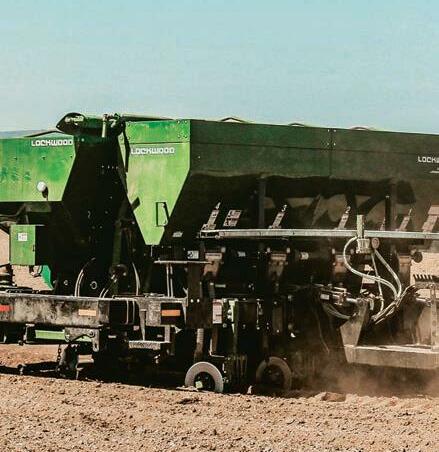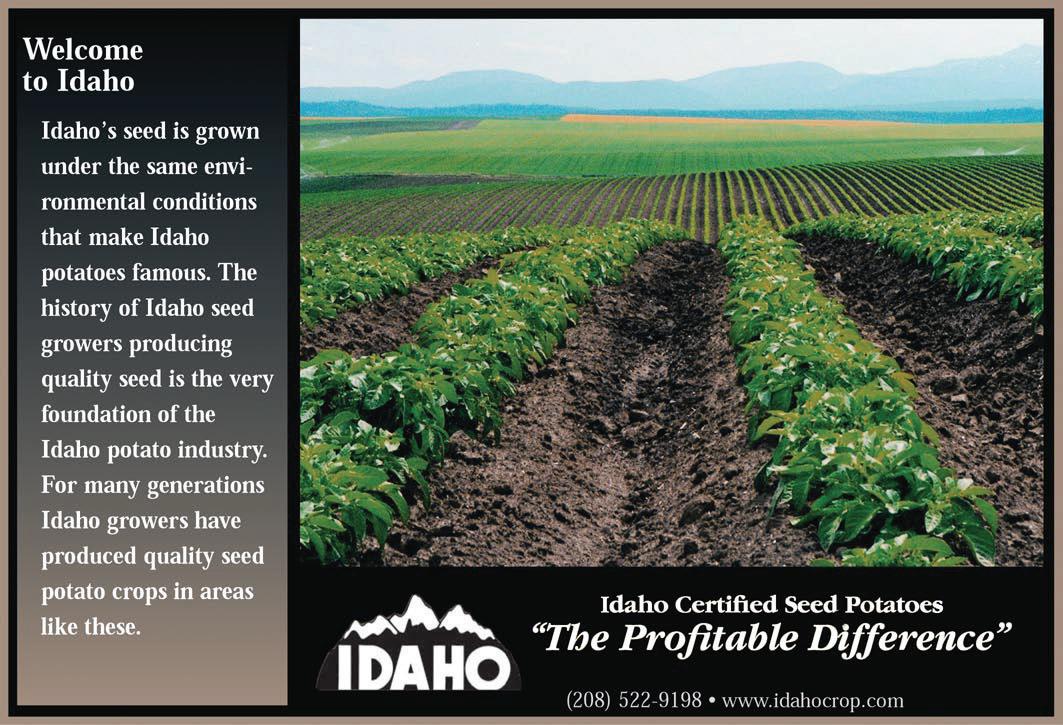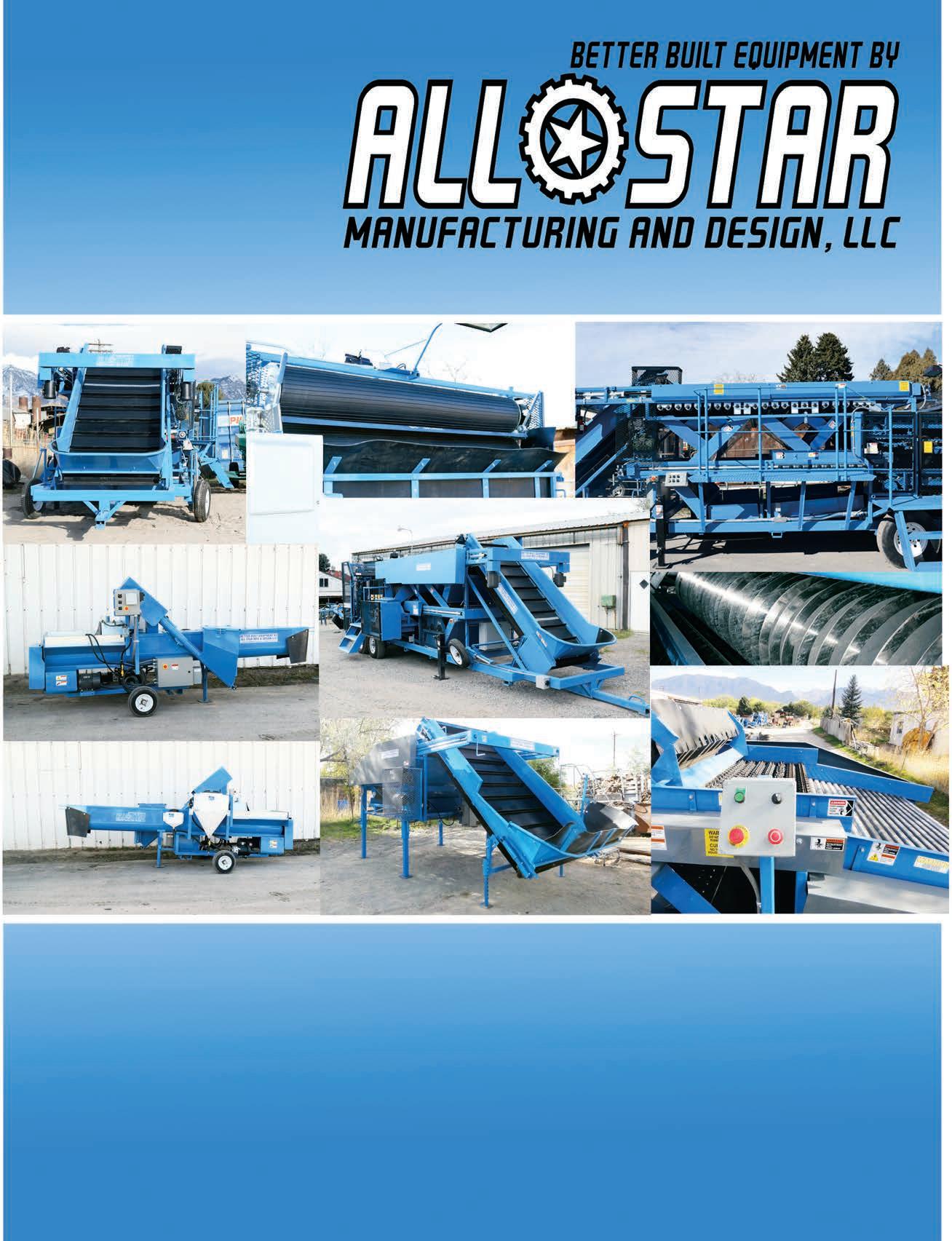PotatoCountry.com • November 2022 Western focus. National impact.


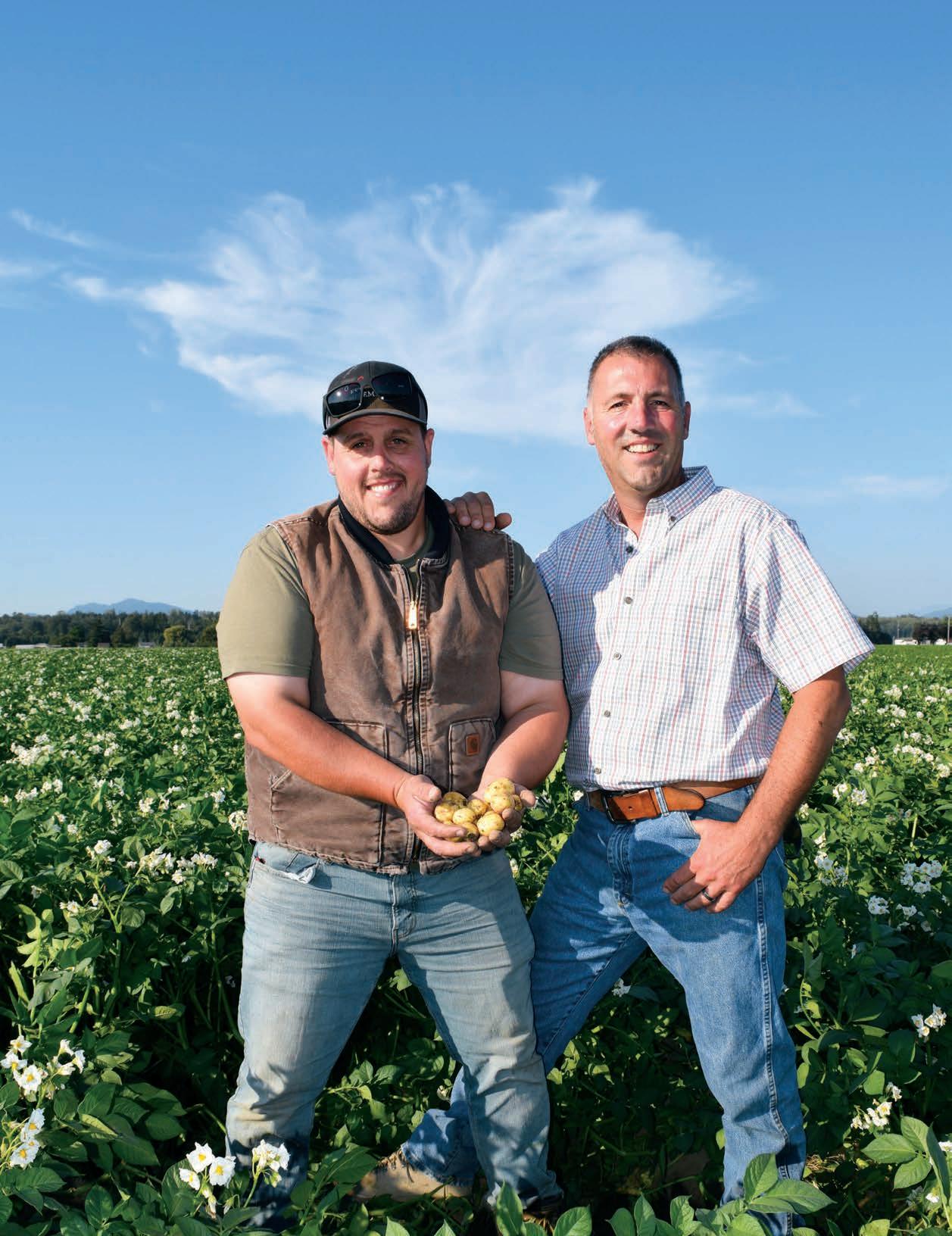







Tony Wisdom (right), founder and CEO of
Valley Farm,
an assistant
manager, display a handful
in
PO Box 333, Roberts, Idaho 83444
Telephone: (208) 520-6461
Circulation: (503) 724-3581
Denise Keller editor@ColumbiaMediaGroup.com


Brian Feist brian@ColumbiaMediaGroup.com

Dave Alexander dave@ColumbiaMediaGroup.com
Andy Jensen www.nwpotatoresearch.com
Jeff Miller jeff@millerresearch.com




Ben Eborn napmn@napmn.com

Dale Lathim dale@pgw.net
Potato Country is interested in newsworthy material related to potato production and marketing. Contributions from all segments of the industry are welcome. Submit news releases, new product submissions, stories and photos via email to: editor@ColumbiaMediaGroup.com.
For information about advertising rates, mechanics, deadlines, etc., call (208) 520-6461 or email dave@PotatoCountry.com.
U.S. $24 per year / Canada $40 per year / Foreign $80 per year
Subscriptions can be entered online at: potatocountry.com/subscribe or call (503) 724-3581.
Email address changes/corrections to: brian@ColumbiaMediaGroup.com or send to Potato Country, PO Box 333, Roberts, ID 83444.
Potato Country magazine (ISSN 0886-4780), is published eight times per year and mailed under a standard rate mailing permit at Idaho Falls, Idaho and at additional mailing offices. It is produced by: Columbia Media Group, PO Box 333, Roberts, ID 83444
Copyright 2022. All rights reserved. No part of this publication may be reproduced or transmitted in any form or by any means, electronic or mechanical, for any purpose without the express written permission of Columbia Media Group.
239-4763













Skagit Valley farmers like Tony Wisdom know that growing specialty colored potatoes in a coastal climate has its pros and cons. While the plentiful precipitation in western Washington often creates challenges in getting potatoes planted and harvested in a timely manner, the region’s moderate temperatures compensate by helping deliver an excellent quality crop.

“Our quality is better. It’s not that we’re better farmers. For sure, it’s not that,” Wisdom says. “It’s just that we have an area with an environment, climate and soil that allows us to produce a really, really good quality specialty colored potato.”
Wisdom is the founder and CEO of Skagit Valley Farm in Burlington, Washington, where he grows potatoes for the fresh market. Thin-skinned specialty red, white and yellow potatoes account for 60 percent of the potato acreage, with the balance dedicated to the farm’s bite-size potato program started five years ago.
“Here in northwest Washington, and in particular, the Skagit Valley, our soils are some of the best in the world. We can grow a huge variety of crops here. We have high organic matter and we’re coastal, so we have moderate temperatures and climate. So, colored potatoes grow especially well in this area,” Wisdom says. “I think you’d find that nationally, we’re recognized as probably the highest quality red and yellow potatoes grown in the country.”
The Skagit Valley’s soil and climate are well suited for shorter-season potato varieties, Wisdom says. With the growing season beginning in mid- to late April, harvest typically starts in early September with hopes of wrapping up by the end of October. In reality, rain usually extends harvest into early November. This year, a particularly rainy spring also delayed planting.
“We’re in an area where we’re pumping water off the fields in the spring
and then putting water back on the fields in the early summer,” Wisdom says. “We go from too dry to too wet in two days in Skagit County. Literally, that’s what happens, and it happens every year.”
“The other side of the coin is being coastal, we’re blessed oftentimes with some nice afternoon breezes when the tides change. So even though it might be warm and a little wet, we get a nice onshore breeze, so that helps keep things dried out. But it can also be bad because if there is any blight out there, it moves the spores around like crazy,” the grower adds, noting that the occurrence of misty conditions during the summer makes blight of higher concern in the region, requiring potato growers to use fungicides and to be diligent about scouting.
Wisdom is a lifelong farmer, born and raised on a family farm in Basin City, Washington. After earning a degree in business management, he worked for
his family’s vegetable operation before relocating to western Washington in the early 2000s. There, he managed another farm in Skagit County before starting his own.
He founded Skagit Valley Farm in 2013 with the idea of growing niche crops and trying to do some things other growers in the area weren’t doing. With a climate ideally suited for brassicas, he started with baby lettuce, baby spinach, organic broccoli florets for processing, and organic red and yellow potatoes. The rotation morphed as Wisdom discovered and pursued new market opportunities to grow into one of the largest farming operations in Skagit County, he says.
Currently, the vertically integrated company is one of the largest producers of Brussels sprouts on the West Coast, with 95 percent of the crop grown for the fresh market. Other crops include winter wheat, barley, broccoli and cauliflower, the latter two of which will be phased out next year due to labor issues and replaced by grass seed.

Skagit Valley Farm employs 150 people year-round and 220 during peak season. Due to the elimination of the agricultural overtime exemption in Washington, the farm is looking for ways to streamline operations, including automating as much of its potato production as possible. The company recently implemented electronic sizing and sorting in the packing shed as one way to gain efficiency.
The farm will also begin using a new process of seed cutting next spring. The European technology uses a heated blade to suberize the cut side of the potato. This will minimize the chemicals used on seed pieces and allow seed to be planted sooner after cutting without the increased risk of seed piece rot.
Finally, to reduce loss in storage, the farm stores its potatoes in wooden bins rather than in a bulk pile. This helps increase airflow and decrease pressure bruise and has made a big difference in increasing pack-out, Wisdom says.
Tony Wisdom, founder and CEO of Skagit Valley Farm, digs in a field of thin-skinned specialty potatoes a week or two before harvest.
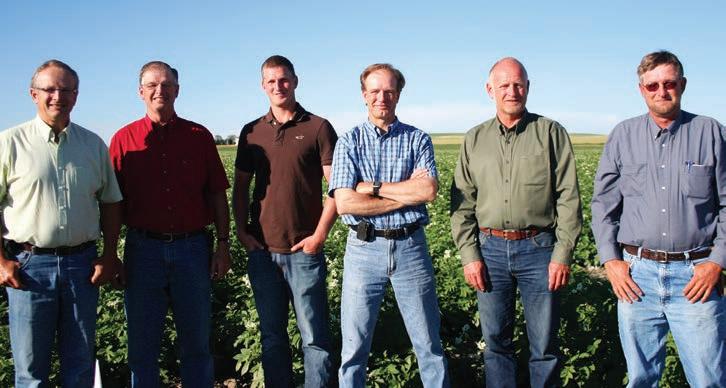

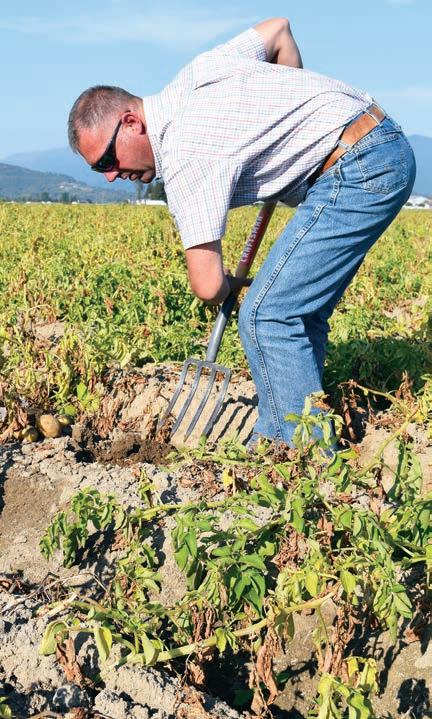
Looking ahead, Wisdom can see that crop quality will continue to be vital to the farm’s success, especially in light of ongoing challenges. The availability of reliable and skilled labor is continuing to decrease while labor costs increase. This trend, combined with the rising cost of production inputs, suggests that profitability is going to be more difficult to achieve in the future.
“Farming is really hard and it’s very difficult, especially over here because of the weather and the things we can’t control. What we can control is our attitude and our effort, and our people are just fantastic on both of those fronts, so that makes producing barley, Brussels sprouts or potatoes cool. It makes the whole thing fun,” Wisdom says.
Wisdom says he and his team feel a sense of satisfaction from seeing Skagit Valley Farm’s brand of potatoes in the produce section of a grocery store and are reminded why they put such an emphasis on quality and customer service. For Wisdom, meeting the high standards demanded in today’s retail environment requires a year-round commitment, focusing on details from seed and variety selection through tuber quality at packing.

“That’s the love affair we have with growing potatoes. It’s super, super hard. But when you produce a good crop, it’s super, super rewarding,” he says.
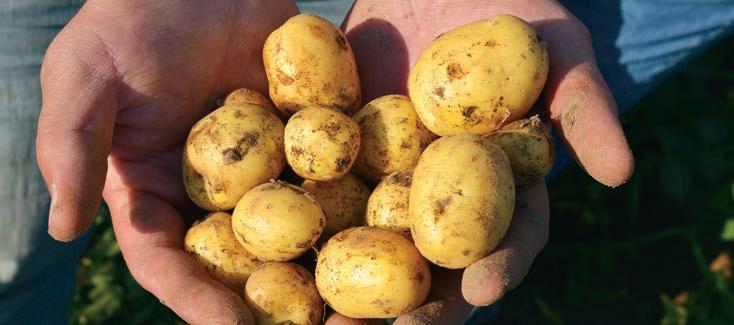
Skagit Valley Farm is one of the largest producers of Brussels sprouts on the West Coast.
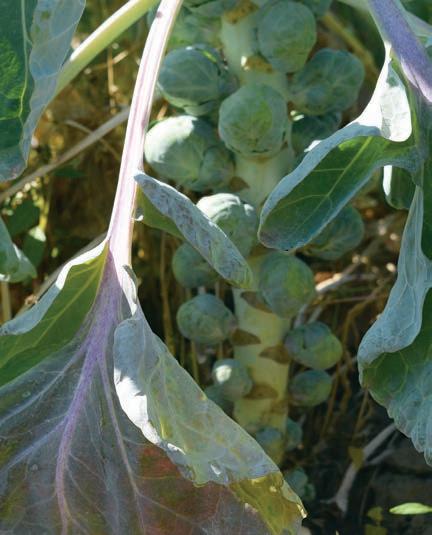
Many growers are BREAKING NEW GROUND by maximizing the effec�veness of the proven soil fumigant Sectagon®-K54 (metam potassium).
Three factors are driving its success:
Sodium-free and adds potassium to the soil
Performs more efficiently on high pH soils
Sodium sensa�ve crops can benefit
more and watch
videos at

ques�ons? Let’s talk. Call 800-525-2803

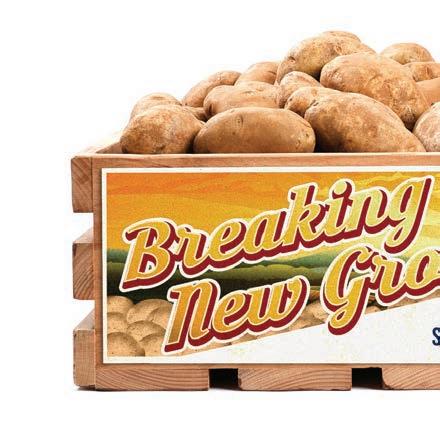
Nematodes are microscopic soildwelling pests. Several plant-parasitic nematodes are of concern for potato growers because of their impact on yield. Nematodes generally attack roots, but some such as root-knot nematodes attack tubers to cause unsightly damage. Symptoms of nematode infestation often appear to be water or nutrient stress with yellowing foliage, and wilting and stunting of plants. Plants afflicted by nematode damage may be more susceptible to root rot pathogens. Growers will typically see symptom hot spots where the nematode infestation is concentrated. Nematodes move with soil and are easily spread from field to field on contaminated equipment.
The potato cyst nematodes (PCNs), Globodera rostochiensis and Globodera pallida, are regulated pests in the United States. Potato cyst nematodes are highly specialized nematodes that originated in the Andes with potato. They are now widespread in most potato growing regions throughout the world. They are sedentary endoparasites, meaning
they infect the roots and establish a permanent feeding site. Males leave the root to mate with females, which then become egg-filled cysts that are visible on the roots. Once mature, the cysts will fall from the roots and remain in the soil where encysted eggs will survive for 20+ years. PCN is difficult to control because eggs can remain viable in cysts for decades and only hatch in the presence of signals from potato or closely related hosts. Each cyst contains hundreds of eggs, which can lead to an exponential population increase when a susceptible host is planted. At high infestation levels, PCN can cause up to 80 percent yield loss.
There are two areas within the U.S. that have contained PCN infestations. In Idaho, the pale cyst nematode (G. pallida) was found in 2006 and infests approximately 1 percent of Idaho potato land. Currently, no russet type varieties, the primary market type grown in the Northwest, have resistance to G. pallida. The primary method of control in Idaho is soil fumigation with 1,3-dichloroproprene. New York
Cysts of the pale cyst nematode, Globodera pallida, emerge from roots of potato growing in a heavily infested field.
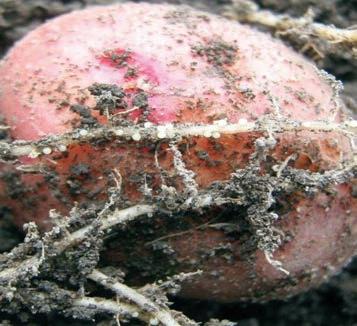
nematode (G. rostochiensis) since 1941, but resistant potato varieties have been developed and once the nematode is no longer detected, a four-year rotation plan of two years of resistant potatoes followed by a nonhost and a susceptible variety keeps golden nematode in check.
Root-knot nematodes are found in all potato growing regions of the world. In northern temperate regions of the
Our isolated northern location along with our group of 10 experienced growers have been producing exceptional seed potatoes with increased energy and the lowest possible disease levels for over 60 years.
Our longevity and historical performance have made us a valued resource and seed potato supplier to growers across North America and the world.
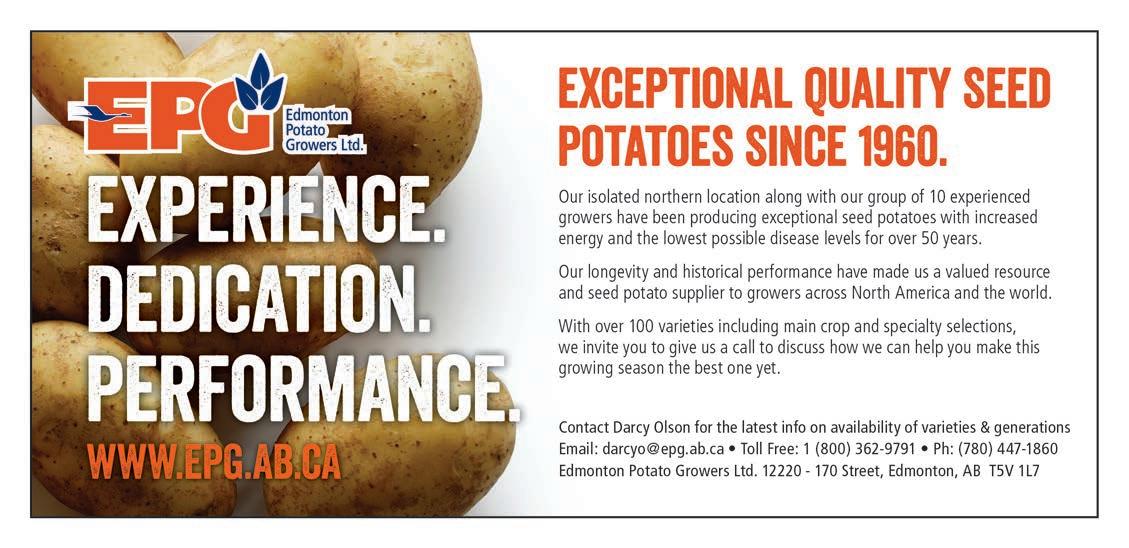

With over 100 varieties including main crop and specialty selections, we invite you to give us a call to discuss how we can help you make this growing season the best one yet.
Contact us to discuss how we can help make this year’s crop the best it can be.
Toll Free: 1 (800) 362–9791 (780) 447-1860
• darcyo@epg.ab.ca
Edmonton Potato Growers 12220 – 170 Street, Edmonton, AB T5V 1L7


America’s favorite way to eat Idaho® Potatoes has always been mashed, and there are more potatoes consumed on Thanksgiving than any other day. Thanks to a petition to the National Day Archives by the Idaho Potato Commission, America o cially celebrates National Mashed Idaho® Potato Day every Thanksgiving.






So enjoy a heaping helping this Thanksgiving. Because when you serve Mashed Idaho® Potatoes, everything else is just gravy. Visit IdahoPotato.com/mashed for mashed potato recipes and tips.








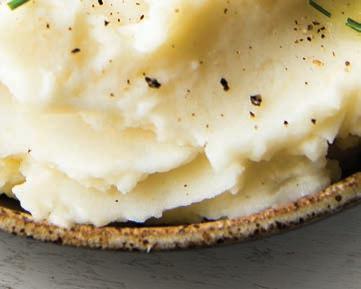




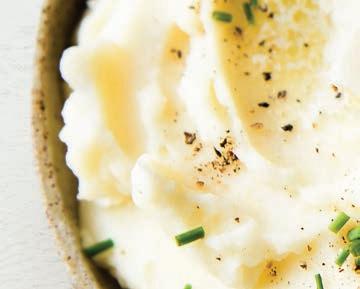

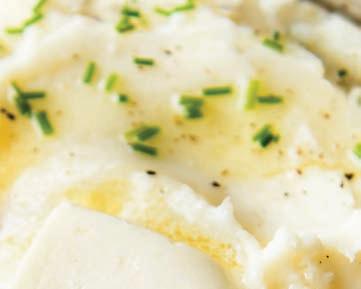


(M. chitwoodi CRKN) and the northern root-knot nematode (M. hapla) are most prevalent. Root-knot nematodes can infect tubers and cause cosmetic damage that reduces potato market value. CRKN is a regulated pathogen in some export markets, and there is little to no tolerance for the presence of this nematode in tubers.
Like cyst nematodes, root-knot nematodes are sedentary endoparasites, infecting roots to establish a permanent feeding site. Eggs are laid in gelatinous masses outside the roots. Root-knot nematodes may complete multiple generations in a growing season. Rootknot nematode infection causes root galling and tuber blemishes that can ruin market quality. Severity of galling and tuber symptoms depends on nematode species, population density and potato cultivar.
Control of root-knot nematode is challenging with its broad host range encompassing monocots and dicots. They can infect a variety of crops, which means rotation to a nonhost may not be a good option. It is important to control weeds that can serve as alternate hosts, as well. There are currently no commercially available resistant varieties for root-knot nematodes, but early maturing varieties can sometimes avoid much of the nematode tuber damage.
This group has a worldwide distribution and an extremely wide



host range. Many species of root-lesion nematodes are capable of infecting potato. Pratylenchus penetrans is the most prevalent species affecting potato in the northern U.S. Root-lesion nematodes are migratory endoparasites that move in and out of the roots to feed, creating lesions along their way. Damaged roots allow entry of other pathogens that can further harm the plants. Root-lesion nematodes can greatly reduce yield and tuber size. Some species can feed on tubers, although P. penetrans causes minimal direct tuber damage.
Species of root-lesion nematodes can reproduce asexually and have relatively short generation times, leading to rapid population increase. Females periodically lay eggs along the roots or in soil. Greater population density exacerbates lesions and damage. Potato cultivars can vary in susceptibility to certain root-lesion nematode species, so it is important to know which species are infesting the
field. Due to the extensive host range of root-lesion nematodes, weed control is important.
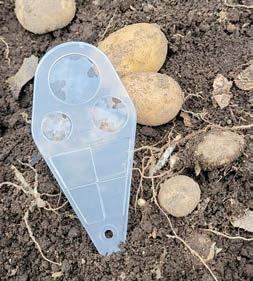

Stubby-root nematodes are not a threat to potato production by themselves; however, they can vector Tobacco rattle virus (TRV) which causes corky ringspot. Corky ringspot can cause up to 50 percent yield loss. Stubby-root nematodes are ectoparasites feeding on root tips, which can stop root growth, causing a “stubby root” appearance. These nematodes cause little direct yield loss but can spread TRV. Stubby-root nematodes are found throughout U.S. potato growing regions, with P. allius being the most prevalent vector in the Pacific Northwest. TRV rarely causes foliar symptoms and can go unnoticed until tubers are harvested. Corky ringspot exhibits brown necrotic rings deep within tuber flesh that break through tuber
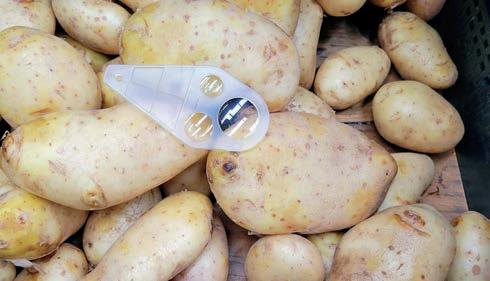
surfaces, creating a corky appearance.


Soil fumigants and nematicides can help control stubby-root nematodes, especially during tuberization when tubers are most vulnerable to corky ringspot. Newly hatched stubby-root nematodes are free of virus. Weed control is important as TRV can be acquired by the nematode from a range of weed hosts. Rotating to a crop like alfalfa which is host to stubby-root nematodes but not to TRV can also help in keeping the field free of corky ringspot. It is good practice to ensure the field is planted with clean seed potatoes to avoid infecting daughter tubers. If harvested tubers appear to have corky ringspot, a diagnosis can be confirmed by lab testing.



Nematode control begins with monitoring for hot spots of symptoms. If an infestation is suspected, soil samples should be sent to a diagnostic lab for nematode identification. Growers should always avoid introducing pathogens by planting with certified seed. Resistant varieties specific to the infesting species can be used if available. Soil movement from infested fields should be minimized by cleaning equipment. Help protect against nematode damage by maintaining good crop health with best irrigation and fertilization practices. Controlling weeds that can be alternate hosts to nematodes is important. Crop rotation to a nonhost may be helpful if the species infesting the field is known.
Soil fumigation and nematicides are generally effective controls for all nematodes. Pre-plant fumigants such as 1,3-dichloropropene and metam sodium are broad spectrum and have the added benefit of eliminating many other soilborne pests. Nematicides are chemicals that directly kill the nematode and are most effective if used jointly with other control strategies. Nematistatics are chemicals that temporarily paralyze the nematode and may allow the crop time to grow and become less susceptible. Incorporation of green manures, especially mustards that have biofumigant effects, is also helpful in controlling nematodes.
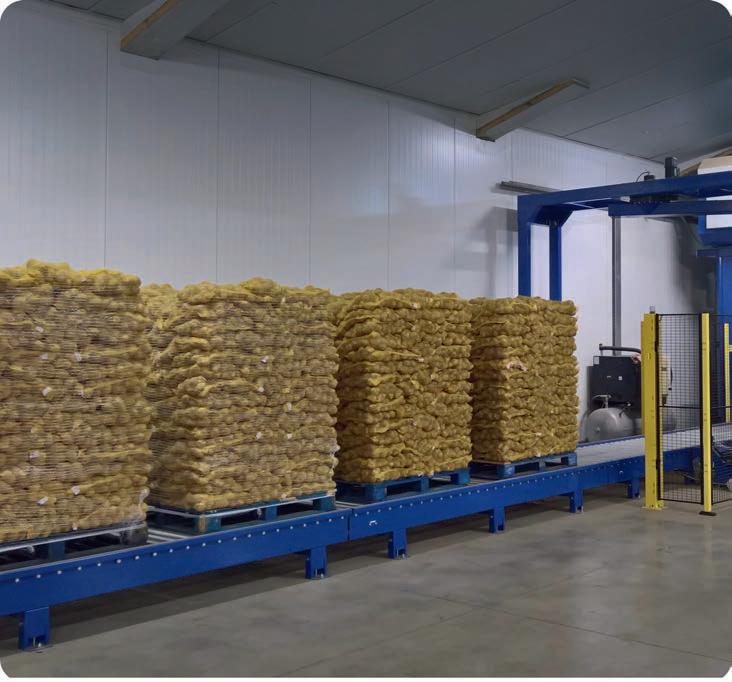

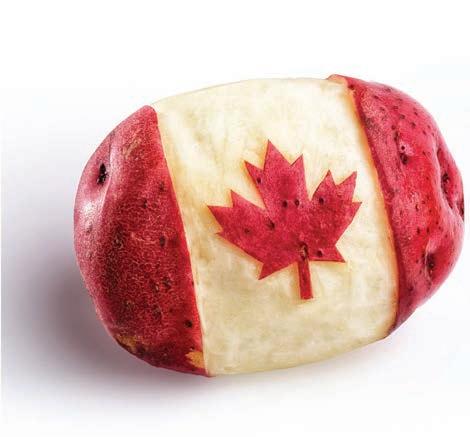 By Jill Rittenberg, Senior Global Marketing Manager, Potatoes USA
By Jill Rittenberg, Senior Global Marketing Manager, Potatoes USA

Potatoes go beyond being America’s favorite vegetable; they are a beloved food worldwide. And while we share the love of potatoes globally, there is also the shared challenge of some people misunderstanding the nutritional benefits of potatoes. This confusion presents a tremendous opportunity to set the message straight and position potatoes as a performance fuel.
In a study completed by global strategy firm McKinsey and Company, global consumers are redefining health to the new six dimensions of wellness. Potatoes can play an active role in three dimensions – better health, better fitness and better nutrition – by driving new relevancy for consumers.
The “Potatoes. Real Food. Real Performance” campaign, launched in 2018, is demonstrating the nutritional benefits of potatoes. The campaign features the fact that potatoes are an excellent source of vitamin C, which can help support the immune system, and a good source of potassium, which can help maintain blood pressure. Showcasing this information teaches consumers that potatoes are a nutrient-dense
vegetable that should be part of a healthy lifestyle. Additionally, the marketing campaign has helped position potatoes as a performance fuel for athletes, active consumers and nutrition professionals, helping ensure potatoes are recognized as an ideal fuel for both the body and the brain.
The global potato industry has taken notice. Organizations across Europe have recognized the effectiveness and potential of the Potatoes USA campaign. During the World Potato Congress (WPC) in Dublin, Ireland, this past spring, three speakers representing Potatoes USA were invited to address the attendees on topics related to potato nutrition, Potatoes USA’s aggressive marketing strategy and opportunities for potato farmers. These presentations have led to multiple requests for additional information and collaboration from globally diverse potato organizations. Most recently, Dr. Katherine A. Beals and Blair Richardson, president and CEO of Potatoes USA, attended a Polish Potato Federation meeting where they shared the latest nutrition research and Potatoes USA marketing campaign with its members to assist their efforts to adopt the performance messaging into their regional communications and marketing programs.
Further meetings are planned during the upcoming SIAL conference in Paris and the annual INTERPOM conference in Belgium.
Objectively, Potatoes USA is hopeful all potato organizations will choose to actively challenge the biased and inaccurate claims published on traditional and social media channels. Potatoes deserve to be the world’s favorite vegetable and should hold this position with pride and confidence.
Potatoes USA has developed a Potato Performance Educational Marketing Resource Kit for the global potato industry that includes marketing tools, nutrition research and recipes to support the effort. An additional potato performance event toolkit is available to use for free to host events locally; the kit includes event materials such as tents, tablecloths and signage to set up at events. For more information, please contact Jill Rittenberg and jill@potatoesusa.com.

Experience the vigour of the north. With colder winters and long summer days, Alberta Seed Potatoes are the best choice for a higher yielding potato crop.
Ideal climate, profitable results.


This material is provided courtesy of Andy Jensen, Ph.D., Manager of the Northwest Potato Research Consortium. For more information, visit www.nwpotatoresearch.com.
Winter is approaching and insects are getting ready to pursue their various overwintering strategies. Below are four common insect pests of potato together with some common insect overwintering strategies. Each insect pursues one or more of these, but which one(s)? Match each insect with one or more overwintering strategy.
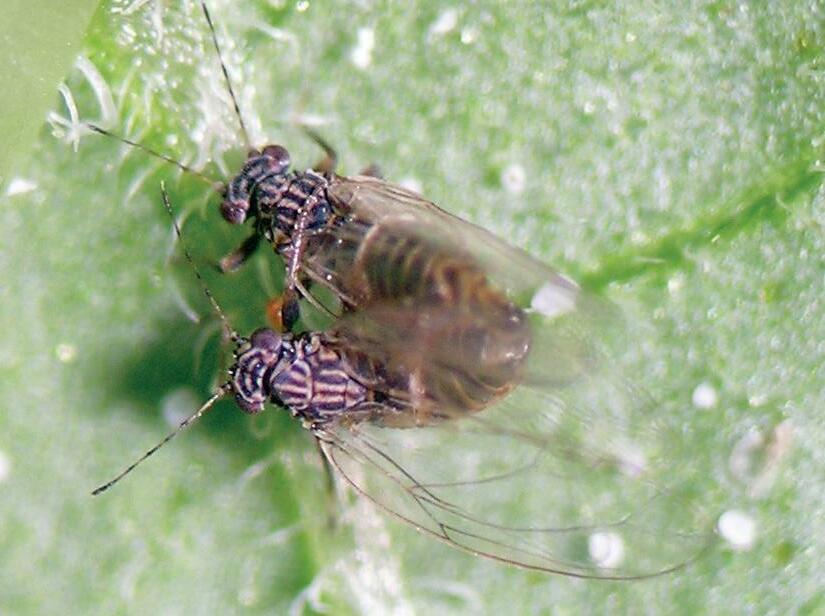

Burrowing deep into the soil in or near the potato fields where they developed, emerging in spring to colonize nearby potatoes
Migrating hundreds of miles away, to return from those distances in the spring
Spending the winter as adults and/or immatures on, or close to, nearby plants that remain green through all or most of winter
Flying to certain nearby trees and shrubs, spending the winter as eggs, which hatch in spring, leading to eventual re-colonization of potato the following summer
Spending the winter in crop residue left over after harvest
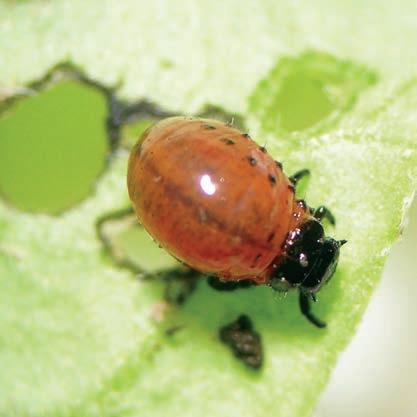



All Star Manufacturing and Design offers potato seed cutters designed to cut both long and round potato varieties. The company is always striving to make improvements in its equipment and has a new optional electronic control system for 2023 that allows users to save settings that can be recalled later for even quicker setup. This feature will be particularly useful when cutting different varieties and sizes in a season.

Potato seed treating involves setting a chemical application rate. It’s set for an estimated average flow rate of seed potatoes through the treater. In practice, potato flow rate will vary, leaving potential for poorly treated seed to reach the field. To avoid this, some operators will err on the side of caution and set the rate a little higher than necessary. While this reduces risks in the field, it also leads to waste and higher costs.
To solve this problem, growers can install a scale from Greentronics in the conveyor ahead of the treater. The scale can be equipped to output a signal proportional to the flow rate over the scale. This output becomes the input for the chemical application pump. With this connected, the pump will apply chemical according to the flow rate measured by the scale. This offers greater uniformity in chemical application and reduced waste and cost.
For efficient planting and higher yields, the Harriston and Mayo team provides the best planting system. The innovative Harriston Clamp planter uses positive seed clamping and low seed drop height for exact seed spacing. The exceptional design allows adjustments, such as bowl height and spacing, to be made from the tractor cab with ease. Harriston Clamp, Cup, Pick and Bed Planters all provide high accuracy and reliability and have many options available.
The Mayo Telescoping Loader quickly fills the planter to complete the efficient planting operation for more acres per day. This high-capacity loader is very durable with a variety of uses including transloading, short-term piling and truck loading. Options on this versatile machine include wireless remote control.



With the 2022 growing season in the rearview mirror, it is time to think about planting 2023.
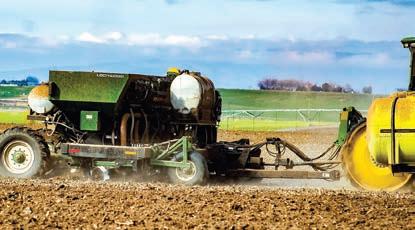
Lockwood is known for offering accurate, efficient planters. The company’s Air Cup and Belted Cup planters now offer options including individual row shutoff. There are situations in fields that having the ability to shut off as many rows as needed will save seed and fertilizer cost versus double planting. This will have a positive effect on a grower’s bottom line.
Be sure to visit Lockwood’s YouTube channel and look for the Jordan Reed Air Cup video testimonial to see the individual row shutoff being used in Washington state.

Precision planting can be simple and easy when growers set up and control dry or liquid applications from existing in-cab ISO terminals. Micro-Trak’s Dual ISOmod connects to in-cab ISO terminals and allows users to choose single or dual channels for up to 12 sections. Advanced features allow users to control normal, parallel and injection modes. It includes powerful multifunction on/off outputs for master, relief, flow trigger or flush functions. The Dual ISOmod is capable of PWM duty cycle monitoring and allows for both flow-based and pressure-based controls.
Milestone potato seed cutters are designed and built to be the ultimate example of capacity, technology and raw performance. Designed and proven to produce a uniform and blocky seed piece, new Milestone seed cutters incorporate several improvements and enhancements over older generations, such as smart coulter/sizer adjust, fullwidth one drop belt, quick adjust trim section and reinforced cutting table support. All Milestone potato seed cutters are backed by knowledgeable and responsive support that customers can rely on when they need it the most.
Editor's note: Information for GroupAg was misprinted in the Storage Essentials feature of the September/October issue. Here is the correct information about the company's storage products and services.

GroupAg is a full-service post-harvest company. The core of the business services includes potato storage ventilation, refrigeration and post-harvest chemical application. Proprietary application methods are efficient and effective. GroupAg can help create and maintain the ideal conditions to maximize the value of the crop through the storage and shipping processes. GroupAg offers engineering expertise to design and build storage ventilation systems with industry-leading components and can service and maintain any existing system.
GroupAg represents and distributes the following: 1,4Group chemicals, Decco chemicals, BioSafe Systems chemicals, BTU Ventilation products, Forte Humidifiers, JTS refrigeration, ATEC Indirex cooling systems and Caldwell/Chief axial fans.

During harvest at



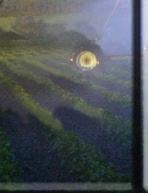


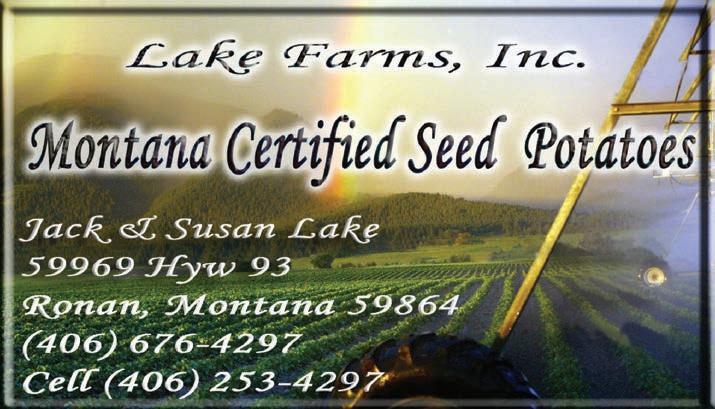




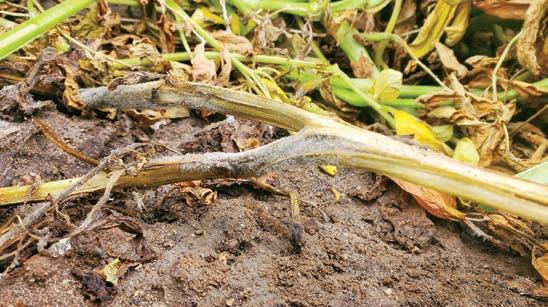

























University of Idaho researchers are introducing genes from a plant in the nightshade family into potatoes, seeking to develop spuds that resist harmful nematodes. The plant, called litchi tomato, has natural resistance to several species of cyst and root-knot nematodes.


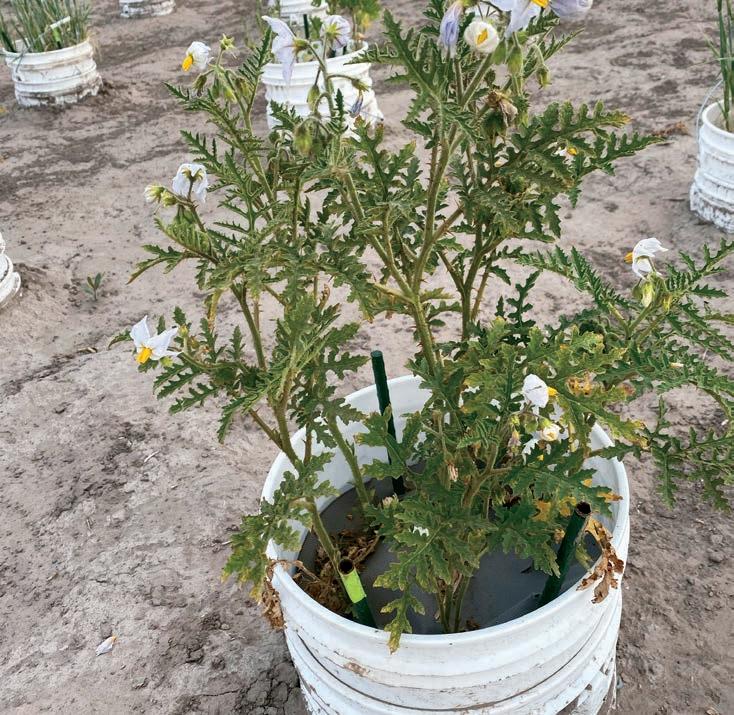
Nematode cysts can remain viable in fields for more than a decade, and they can be found down to 3 feet deep in soil.
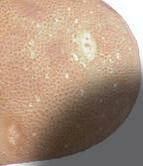

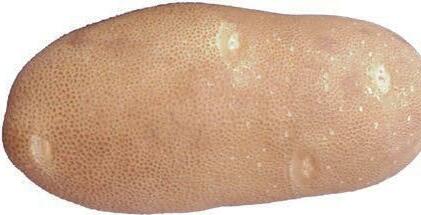







University of Idaho researchers – led by nematologist and plant pathologist Louise-Marie Dandurand – have worked for several years studying a range of possibilities for using litchi tomato as a tool to avert nematode-related yield losses in potatoes. Litchi tomato has been planted as a “trap crop” in the program to eradicate pale cyst nematode. When planted in fields infested with pale cyst nematode, litchi tomato stimulates cysts to hatch in the absence of a viable host, causing them to starve.
Dandurand also has a post-doctoral researcher seeking to identify chemicals in litchi tomato that harm or kill nematodes. The chemicals that prove effective could be refined and applied directly to fields as a pesticide.

Allan Caplan and Fangming Xiao, both with the University of Idaho, have been working to identify the genes in litchi tomato that are specifically expressed when nematodes attack the plant.
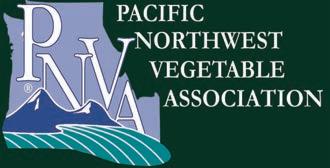
“We found at least 277 genes that got turned on,” Caplan said. “We think not all of them are necessary.
We have to make educated guesses of which to try first, and it’s really a matter of trial and error. We’re pretty certain some of these are going to have a big effect, but we can’t say with certainty which ones they’re going to be.”
They turned over some of the genes they suspect may be directly involved in killing nematodes to colleague Joseph Kuhl, who used biotechnology to introduce them into a red-skinned potato variety, Desiree, last summer. Desiree was chosen because it’s relatively easy to transform through genetic modification.
“If we see resistance in Desiree, then we’ll make the effort to put it in russets,” Caplan said.
Xiao created some biotech potatoes using litchi tomato genes last fall, and Caplan is set to introduce additional litchi tomato genes into potatoes. All the growing, infecting and analysis is taking place in closed growth chambers.

By first using genetic engineering to find the pathway through which litchi tomato protects itself, Caplan believes researchers may later be able to change gene expression to protect potatoes from nematodes through laboratory methods that aren’t considered to be genetic modifications.
Many growers are BREAKING NEW GROUND by maximizing the effec�veness of the proven soil fumigant Sectagon®-42 (metam sodium).
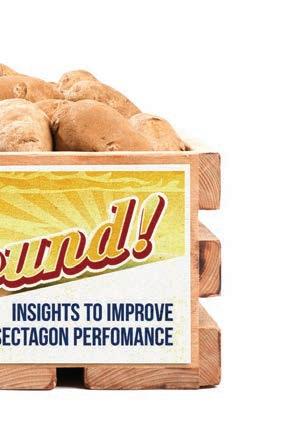
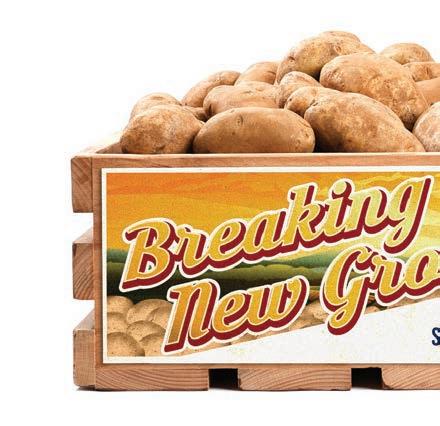
Three factors are driving its success:
• Proper soil �lth
• Op�mal soil moisture well before applica�on
• Precision placement of Sectagon-42
Learn more and watch instruc�onal videos at novasource.com Got ques�ons? Let’s talk. Call 800-525-2803
Always read and follow label instruc�ons. Novasource® and Sectagon® are registered trademarks of Tessenderlo Kerley, Inc. ©2022 Tessenderlo Kerley, Inc. All rights reserved. Learn more at novasource.com

 By Kam Quarles, CEO, National Potato Council
By Kam Quarles, CEO, National Potato Council

Whencelebrity chef Simon Majumdar tweeted a photo of his Potato Expo 2022 cooking demonstration last January, Duff Goldman bemoaned missing the show. “WHY DIDN’T I KNOW THERE WAS SOMETHING CALLED “THE POTATO EXPO”?!?,” the Food Network personality asked in a retweet. Emmy Award-winning host of Chopped and Chopped Junior Ted Allen also jumped in to echo Goldman’s regret, posting his reply about his love of America’s number one vegetable: “The potato is a miracle product – as much a miracle as are eggs.”
After an offline discussion, the food personalities resolved to remedy their
previous Potato Expo absences by taking the 2023 event by storm in a chef cookoff of their favorite potato recipes.
The cooking competition, entitled, “This Spud’s for You – Celebrity Chef Edition,” will be hosted by Allen and feature chef teams led by Majumdar and Goldman. The cookoff, along with a separate cooking demonstration by longtime Potato Expo favorite Majumdar, will serve as featured events of Potato Expo 2023, to be held at the Gaylord Rockies Resort in Aurora, Colorado, Jan. 4-5, 2023.
Hosted annually by the National Potato Council, Potato Expo has become the largest conference and trade show for the potato industry held in North America. In January, the event will celebrate its 15th anniversary and once
again bring together growers, suppliers, industry experts and value chain partners from around the world for two days of learning, business development and networking.
In addition to the 100,000-squarefoot trade show, the Expo Hall will host a stage for “Potato Talks,” a center of activity featuring engaging discussions and entertainment all focused on the latest innovations in potatoes and potato production.
As always, the 2023 event will include numerous networking opportunities, such as the Kick-Off Reception with a live auction to benefit the Potato Leadership, Education and Advancement Foundation (Potato LEAF), daily happy hours, a beer garden, and an Après ski village-themed closing party. Attendees will also have space to meet and do business in Meet & Potatoes Lounges and two coffee bars, and in the restaurants, sports bar and meeting spaces located throughout the Gaylord Rockies Resort.
Potato Expo serves as a forum to foster collaboration between national and state potato associations, as well as the rest of the industry. Potatoes USA, United Potato Growers of America, Potato Sustainability Alliance and others meet each year prior to the kickoff of Potato Expo to organize and plan for the new year. The full schedule can be found at www.nationalpotatocouncil.org/ potato-expo/schedule.
Visit the Expo website at www.potatoexpo.com to register, book lodging at the Gaylord Rockies Resort and access further important information about the event.
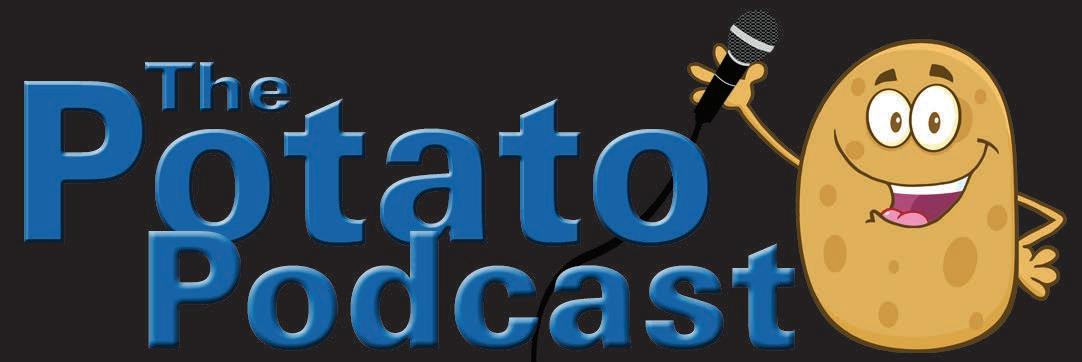

Shoshone Bannock Casino Hotel Fort Hall, Idaho idahopotato.com/industry/ harvest-meeting

Three Rivers Convention Center Kennewick, Wash. Sheri Nolan, (509) 585-5460 or pnva.org
Gaylord Rockies Resort & Convention Center Aurora, Colo. potato-expo.com
Pond Student Union Building and Holt Arena Pocatello, Idaho Kristy Mayer, kristym@uidaho.edu
Three Rivers Convention Center Kennewick, Wash. potatoconference.com
2023 NPC Washington Summit Washington Marriott at Metro Center Washington D.C. nationalpotatocouncil.org

Scale
Flumes,

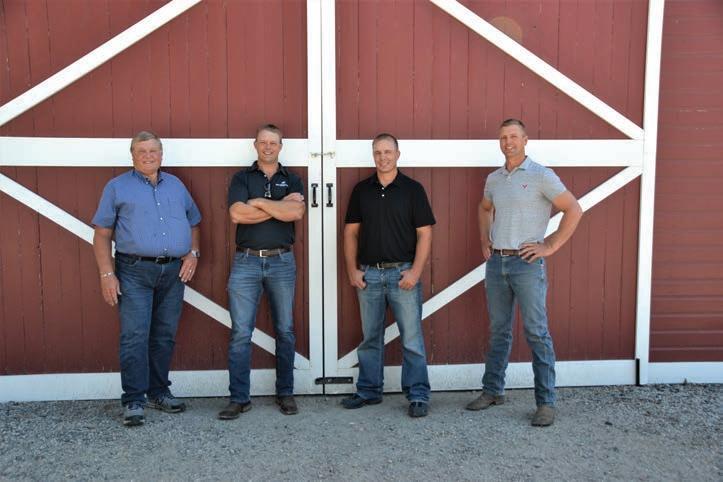
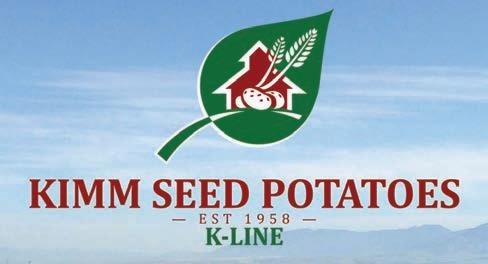
Potato growers facing post-harvest diseases now have another tool in the toolbox for protection during storage. Archive fungicide utilizes fludioxonil and azoxystrobin to deliver robust protection against silver scurf and Fusarium dry rot, diseases that are of particular concern while potatoes are in storage. This broad-spectrum fungicide combines two unique modes of action for more disease control and built-in resistance management to preserve potato quality. Visit www.syngenta-us.com/fungicides/archive.


Key Technology’s new reversible Zephyr conveyor moves in either direction, maximizing production line versatility for food processors. The reversible Zephyr is designed for frozen bulk foods including potato products, as well as dry products like potato chips/crisps. Zephyr’s unique motion profile gently slides and conveys product with no segregation or stratification, while also reducing product damage and the loss of coatings. The reversible capability is available on new Zephyr conveyors and as a field upgrade for installed systems.
Visit www.key.net.
Photo A shows stems with varying severity levels of black dot, caused by the fungus Colletotrichum coccodes. C. coccodes can cause disease on its own, but also develops as plants naturally senesce or die due to other causes such as Verticillium wilt.
Photo B shows a stem breaking down from white mold, caused by the fungus Sclerotinia sclerotiorum. This fungus produces small, black sclerotia, which can be seen inside the stem. Lesions will also have concentric rings. Infected tissue becomes very brittle, and infected stems are easily broken.
The stem in Photo C is affected by gray mold, caused by Botrytis cinerea. B. cinerea is similar to C. coccodes in that it can cause disease on its own, but is more often observed infecting tissue that is already dying from other causes.
Photo D shows a white, cottony growth on the dead leaves at the bottom of the furrow. This fungus was not identified, but many different fungi can grow on dying, decaying leaves. Many of these are not pathogens, but are consuming the dead leaves.
Potato Seed Cutter built by Milestone is the product of constant refinement, nonstop innovation and hard earned experience. Milestone has over 50 years experience designing, building and operating potato seed cutters. Let that experience go to work for you!

W Hwy 39, Blackfoot

Free:
-574-1852
208 785


The 9th annual Ag World Golf Classic raised $110,332 to benefit the Ronald McDonald House Charities Inland Northwest. Nearly 300 golfers and 100 sponsors took part in the charity golf tournament in June. In the past nine years, the Ag World Golf Classic has raised $749,254 for the Ronald McDonald House Charities.
The 10th annual tournament is set for June 6, 2023, at Canyon Lakes Golf Course in Kennewick, Washington, and June 8, 2023, at the Links at Moses Pointe in Moses Lake, Washington.
USDA has announced nearly $73 million in grants to support specialty crops, including nearly $3.6 million for potato industry programs and research through the Specialty Crop Block Grant Program. The program funding is designed to strengthen U.S. specialty crop production and markets to promote healthy eating by all Americans.
This year’s grants include funding for Colorado and Idaho to market potatoes in the interior of Mexico, preemptively managing potato production under extreme heat and water stress in Washington state, developing variable rate nitrogen and water management strategies in Minnesota, and managing soil-borne diseases through integrated soil improvement in Maine.
The Potato Variety Management Institute (PVMI) has hired Jenny Durrin as its new executive director. Durrin is the former director of the University of Idaho Seed Potato Germplasm program. She replaces Jeanne Debon who has served as PVMI director since the organization’s inception in 2005 and will retire in early 2023. Debons and Durrin will work together for three months to ensure a smooth leadership transition.
PVMI promotes and markets new potato varieties in Idaho, Oregon and Washington.
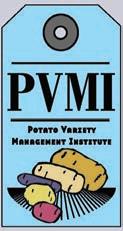

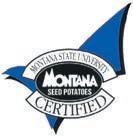

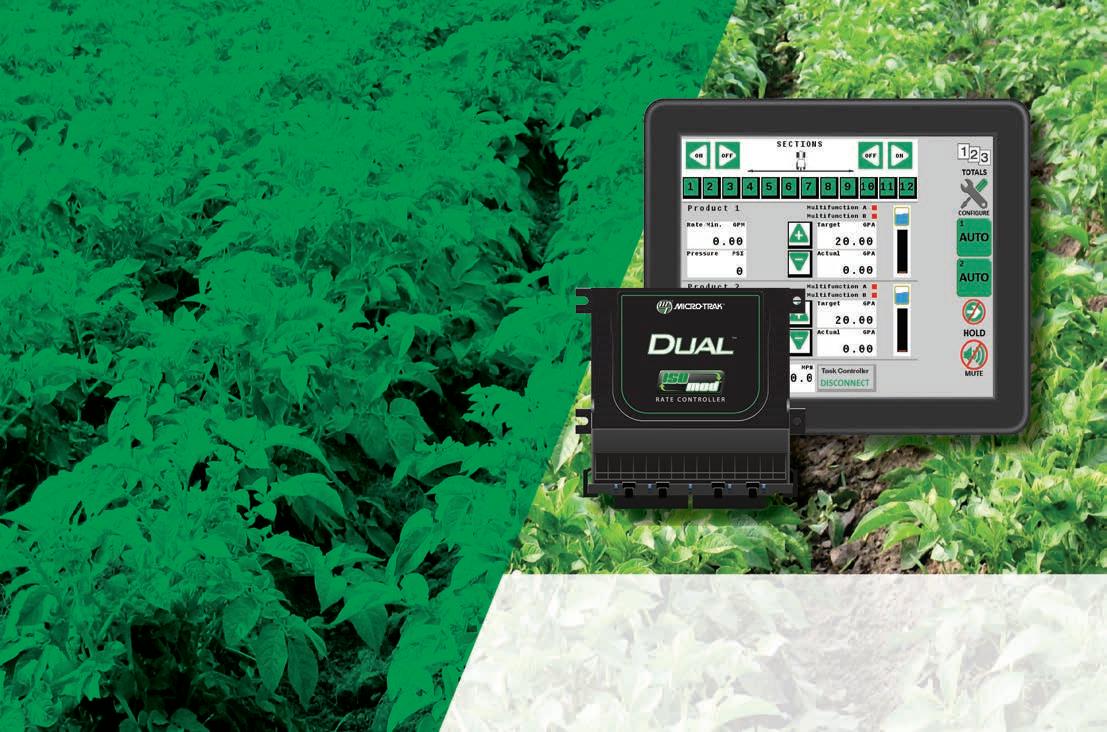






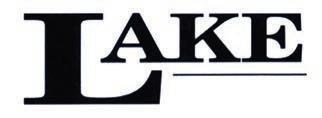
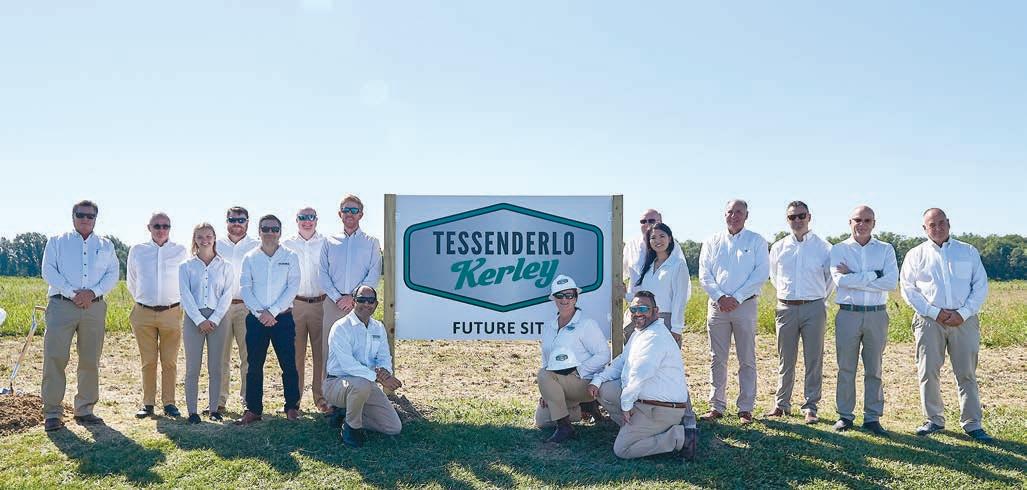
Tessenderlo Kerley Inc. held a celebratory groundbreaking to mark the commencement of construction on a new liquid fertilizer facility in Defiance, Ohio. The 50,000-square-foot production facility will occupy 50 acres and is set to become operational in 2024. The facility will serve the eastern Great Lakes region through its distribution partners and will include terminal load-outs for railcars and tanker trucks.
Tessenderlo Kerley will produce its liquid sulfur-based crop nutrition brands such as Thio-Sul, KTS and K-Row 23, as well as sulfite chemistries for the industrial market.
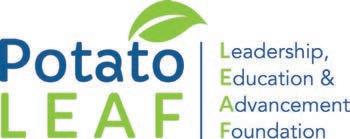

The Potato Leadership, Education, and Advancement Foundation (Potato LEAF) has selected Paige Hickman as the recipient of its 2022-23 academic scholarship. The $10,000 scholarship award is provided annually to one graduate student with a strong interest in research that can directly benefit the U.S. potato industry.
Hickman is a Ph.D. student at the University of Idaho, studying plant-parasitic nematodes, insect pests and diseases of potato. Hickman’s research focuses on creating practical control strategies and educating growers on sustainable pest and disease management. Her research is currently focused on potato cyst nematode and includes the evaluation of new trap crops and the development of crop rotations with trap crops and resistant varieties.

The National Potato Council (NPC) has welcomed new program coordinator Madeleine Poulin to the team. Poulin will assist with the annual Potato Expo, NPC Washington Summit and NPC summer meeting, as well as a variety of membership programs, industry publications, and other policy and membership development activities.
A 2022 graduate of Elon University in Elon, North Carolina, Poulin earned a bachelor’s degree in environmental and sustainability studies and policy studies, with a concentration in sustainable food production.
McCain Foods has acquired Scelta Products, a Netherlandsbased producer of frozen foods. This purchase is the latest in a series of investments and acquisitions McCain has made in recent years to expand its appetizer and snack offerings.
Scelta Products has been in the frozen vegetable industry for more than 22 years and has been a business partner of McCain’s for 13 years. Scelta Products’ vegetable appetizers fit well within McCain’s existing appetizers portfolio and will allow McCain to serve growing customer demand for snacking options, according to the company.


Bonnie Johnson has joined Potatoes USA as director of nutrition and industry relations. She is a registered dietitian with more than 20 years of experience in the food industry. She calls herself a “nutrition translator,” working to translate and deliver credible, science-based information to business partners, healthcare professionals and consumers to build trust and respect. In the past decade, Johnson has partnered with several start-up ventures and large food companies to bring healthy food products to life. Her passion for commodity marketing was cultivated at the Dairy Council and the National Peanut Board.
Johnson earned a bachelor’s degree at the University of Arizona, a master’s degree at Colorado State University and will soon begin working to attain an MBA at the University of Colorado, Boulder.

Major exporting countries shipped a record 2.455 billion pounds of French fries and other frozen potato products to countries outside of their local trading zones during the AprilJune quarter. That is 164 million pounds more than year-earlier shipments, a 7.2 percent increase. Seven of the 10 major French fry exporting countries posted large percentage increases relative to 2021. However, the United States and Poland saw the largest volume reductions. EU fryers have captured 55.9 percent of the sales growth, while Argentina, China and New Zealand combined to capture 36.8 percent of the second-quarter sales growth. In contrast, U.S. and Canadian exports fell short of the year-earlier sales volume.
Domestic French fry demand has been strong in North America and in the European countries. Global frozen product demand also has been strong. Despite limited raw product supplies, which have put a damper on the product available for offshore sales, 17 of the 22 major importing countries posted record frozen product imports during the second quarter. The continuation of the upward trend during 2022-23 is uncertain due to current economic conditions. In this article, we explore global French fry trade by major exporter as well as the trade outlook for the next 12 months.
European fryers exported a record 1.613 billion pounds of French fries and other frozen potato products to customers outside the EU during the second quarter of 2022. Exports to external customers exceeded yearearlier sales by 113 million pounds, a 7.5 percent increase. Belgium and France each posted record large second-quarter exports. Belgium’s exports totaled 886 million pounds, up 104 million pounds or 13.3 percent from last year. At 588 million pounds, exports from the Netherlands jumped by 46 million pounds, or 8.4 percent. Poland’s secondquarter exports fell 51.8 percent, or 36 million pounds. Poland’s large downturn was due to a steep drop in exports to Russia. France increased second-quarter sales by 3.8 percent, while Germany reduced second-quarter sales by 6.3 percent. All but two of the EU’s top 10 customers increased their purchases of French fries and other frozen products during the second quarter. The largest volume increases came in sales to the United Kingdom, Saudi Arabia, Colombia and Japan. Second-quarter exports to the U.S. increased by 10.8 percent, to 112 million pounds. Brazil, the fourth largest importer of EU French fries, reduced its purchases by 1.1 percent relative to the year earlier. EU fryers captured 65.7 percent of the global French fry business, up slightly from 65.5 percent a year earlier.
North American fryers shipped 609 million pounds of frozen potato products to offshore markets during the second quarter of 2022. That fell 22 million pounds short of year-earlier shipments, a 3.5 percent decline. U.S. frozen product exports fell by 6.7 percent, while Canadian offshore exports climbed 18.4 percent during the quarter. Japan, the largest customer, took 167 million pounds of product during the period, 3.2
percent less than year-earlier purchases. Mexico reduced its purchases by 24.5 percent, to 134 million pounds. Exports to South Korea increased by 17.5 percent, to 54 million pounds. Sales to Taiwan and the Philippines rose 9.4 percent and 17.8 percent above year-earlier shipments, respectively. Frozen product exports to the remaining 68 customers increased by 6.2 percent.
Raw product supply limitations and strong domestic demand have held back export growth this year. North America’s market share slipped from 27.6 percent to 24.8 percent during the second quarter of 2022. That is the lowest market share for the period on record.

Argentina exported a record 151 million pounds of French fries during the second quarter. That is 47 million pounds more than year-earlier sales, a 45.1 percent increase. Argentina’s share of the global market reached 6.1 percent during the April-June 2022 quarter.
New Zealand exported 36 million pounds of French fries during the second quarter. That exceeded year-earlier sales by 9 million pounds, a 33.2 percent increase. New Zealand captured 1.5 percent of the global market, up from 1.2 percent a year earlier.
China exported a record 46 million pounds of frozen potato products outside of greater China during the second quarter of 2022. That is 18 million pounds more than it exported a year ago, a 65.4 percent increase. China’s share of the global French fry market rose to 1.9 percent, up from 1.2 percent a year earlier.
French fry demand has been strong, despite substantial finished product price increases. Second-quarter global French fry exports grew by an average of 6.4 percent during the 10 years leading up to the pandemic (2010-2019). This year’s 7.2 percent export growth is impressive,

given the raw product constraints during the quarter. Demand appears to be strong; however, inflation and economic instability increase the uncertainty for demand.
On the supply side, the EU’s top five French fry producing countries will likely be dealing with limited raw product supplies again this year. EU production could be down 8 percent – 10 percent. Our current estimate puts U.S. production up 0.6 percent from 2021. Canada’s production is estimated to be down 2.7 percent. Limited raw product supplies could constrain global export growth during the next 12 months. Fryers may need to increase prices or put some customers on allocation to effectively ration the limited finished product supplies.
Beet leafhopper: Strategy 3 – This insect is thought to mostly overwinter locally, but it may also fly some distance to preferred overwintering sites with appropriate plants that stay green through winter.
Colorado potato beetle: Strategy 1
Green peach aphid: Strategies 3 and 4 – This aphid normally overwinters as eggs on peach and close relatives. But in warm places or years, it happily overwinters as adults and immatures on green biennial weeds, garden plants, etc. However, because it can travel many miles with the wind, Strategy 2 is also sometimes correct.
Potato psyllid: Strategy 3 – This insect is understood to spend the fall and early winter associated with perennial relatives of potato such as bittersweet nightshade and matrimony vine. Like aphids, however, psyllids can travel long distances in the wind, so Strategy 2 may also be correct in some times and places.
By Ben Eborn, Publisher, North American Potato Market News

• Major exporting countries shipped a record volume of French fries and other frozen potato products to countries outside of their local trading zones during the second quarter of 2022.
• EU fryers have captured over half of the second- quarter sales growth, while North American exports remain below year-earlier levels.
• Argentina, New Zealand and China significantly increased French fry export volumes during the second quarter.
• French fry export growth exceeded the 10-year average growth rate during the second quarter.
• Limited raw product supplies in both the EU and U.S. could make maintaining global export growth challenging during the next year.
Editor’s note: To contact Ben Eborn, or to subscribe to North American Potato Market News (published 48 times per year), write or call: P.O. Box 176, Paris, ID 83261; (208) 525-8397; or email napmn@napmn.com.


The potato industry has always been a rollercoaster ride, but in the Columbia Basin, we have historically been able to avoid most of the ups and downs endured by growers in other regions. Through our blessings of great soil and weather conditions, our historical yield and quality has been consistently second to none. Further, those blessings take the variation out of both yield and quality to give us the least divergence from historical trend lines. Because of those consistencies on the production side, the potato contracts have provided an amazingly stable economic platform that has been the backbone of the agricultural community in the Columbia Basin.
However, last year, we saw a great drop-off in our potato yields and quality that significantly reduced contract-generated revenue at a time when we were experiencing unprecedented inflation in the cost of production. After that very painful experience, growers were hoping for and expecting a rebound to normal potato production at or maybe even above the historical averages.
This hope was holding firm for most of the growing season, even with the early harvest yields coming in much lower than expected due to an unusually cool spring. Most industry experts thought the crop was behind by about two weeks when harvest began, but long-range forecasts were showing nearly perfect weather for the rest of the growing season. However, those hopes and expectations started to fade in early to mid-August when temperatures exceeded 100 degrees each day. By the end of the month, August went down as the hottest on record for the Tri-Cities of Washington.
Rather than catching up, the potato plants were not able to do much, if any, bulking each day, and the later planted fields that were about on time in July joined the early variety fields in being close to two weeks behind in development. Over the course of fewer than 30 days, the estimates on the crop changed from being at or above average in overall yield to being near 10 percent below average.
The saving grace and what is different from last year is that for the most part, the quality this year is exceptional other than size. The smaller size profile, of course, is part of the reason for the lower yields and will make it challenging for processors to meet the length requirements in some of their contracts. But overall, it should be a manageable situation.
Any contract overages or open potatoes should be worth a small fortune this year. Throughout history, there has always been a very large pile of open potatoes in Idaho and a fair amount in the Basin. This year, due to fears of water shortages
and the high cost to grow potatoes, Idaho’s speculative growers opted to plant other crops with a more certain profit level that required less water. As a state, Idaho is down more than 25,000 acres from last year, yet all segments of the industry there have maintained historic levels of contracting, which only leaves the speculative potatoes to account for the reduction. With our reduced yields, there are very few contract overages, and fewer truly open potatoes were planted this year than we normally see. This is creating a very large demand for the few open potatoes in the Pacific Northwest, so prices should be very high throughout this marketing year.
I hope everyone has had a very safe harvest season, and I wish you the best as you finish out this year and start to enjoy some well-deserved downtime with your families.

